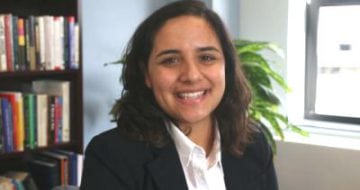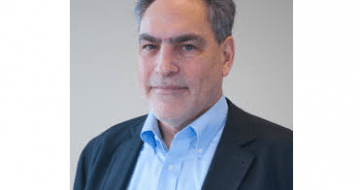
Betsy Brand, AYPF Executive Director
The end of the year is always a time for reflection, and as AYPF’s 25th year ends, I have been reflecting even more on our work and the education, youth, and workforce policy environment. What has changed and what hasn’t changed over those 25 years? Are things better or worse for youth? What can we point to as “wins?” What does this signify for the future?
First, I’m disappointed that there are still so many young people who are disconnected from education, the workforce, and society and that so much inequity exists across groups of these young people. While the number of disconnected youth aged 16-24 has declined from 6.7 million youth in 2013 to 4.6 million youth today, that is much too high, especially when you think of the individual lives and lost potential of each young woman or man. The majority of youth who are disconnected are youth of color or come from low-income families or communities, and many of them are involved with the child welfare or juvenile justice (JJ) system, have health or mental health issues, or are recent immigrants. There are some high quality alternative education and reengagement efforts that are successful in helping youth reconnect, but there are too few of them to reach everyone.
High school graduation rates have improved over the last 25 years. When AYPF started, there were high schools with dropout rates as high as 60-70%. Great research done by Robert Balfanz highlighting dropout factories and his subsequent work developing early warning systems along with the small high schools movement gave us data and strategies to make school-wide changes that improved high school completion for many students.
However, while overall high school dropout rates have declined, the dropout rates for students with disabilities, English language learners, low-income youth, and youth in the foster care and JJ systems remain stubbornly high, and we haven’t put policies or practices into place to help them be successful, even though we have a pretty good idea of what works.
 One issue that has always irked me for decades and that we haven’t addressed is guidance and counseling for high school students. The national student to counselor ratio has changed little in the past ten years (2005-2015) and stands at 491, up slightly from 479. The highest statewide ratio of students to counselors is 924 – Arizona has that dubious distinction. We know that counseling in general, and college and career exposure, exploration, counseling, and advisement in particular, is critical to making wise choices and selecting the path to success, yet college and career guidance and counseling often gets pushed aside, with students losing out. Fortunately, community-based nonprofits, like Project Grad, have helped fill the gap in many places, but there are still too many students who lack this vital support.
One issue that has always irked me for decades and that we haven’t addressed is guidance and counseling for high school students. The national student to counselor ratio has changed little in the past ten years (2005-2015) and stands at 491, up slightly from 479. The highest statewide ratio of students to counselors is 924 – Arizona has that dubious distinction. We know that counseling in general, and college and career exposure, exploration, counseling, and advisement in particular, is critical to making wise choices and selecting the path to success, yet college and career guidance and counseling often gets pushed aside, with students losing out. Fortunately, community-based nonprofits, like Project Grad, have helped fill the gap in many places, but there are still too many students who lack this vital support.
Similar to high school graduation rates, college enrollment and completion rates have increased in the past 25 years, but there are large gaps between groups of students. According to NCES, between 2000 and 2016, total undergraduate enrollment in degree-granting postsecondary institutions increased by 28 percent, and while enrollment increased for most racial subgroups, the disparities in enrollment are still quite stark: of the 16.9 million students entering a postsecondary institution, 9.1 million were White, 3.2 million were Hispanic, 2.2 million were Black, and 1.1 were Asian and Pacific Islanders. We are doing a better job of getting students into college, but many of them never complete. James Rosenbaum, Researcher, Northwest University, wrote a report on these students and coined the phrase the New Forgotten Half – youth who attend college but drop out before attaining a credential. According to Rosenbaum, 37% of on-time high school graduates enroll in community colleges and intend to ultimately pursue bachelor’s degrees, but nearly half (45% ) drop out within eight years, earning no degree and incurring significant expenses. The data on college completion is even worse for students in the foster care system; only about three percent of those youth earn a bachelor’s degree. Yet again, we know of multiple interventions, strategies, and comprehensive approaches that help young people get to college and stay in college, but we haven’t done enough through policy to sustain these programs or ensure they reach all youth who need support.
Not to be too much of a Debbie Downer, we have made good progress in some areas. Helping youth develop the range of skills (academic, employability, and social and emotional) needed to succeed in college, careers, and life has become a well-supported goal. Language in recent legislation (Every Student Succeeds Act and Perkins V) on college and career readiness gives states more authority and flexibility to focus on a broad range of skills. There is a growing awareness of the importance of social and emotional skills, as highlighted by the upcoming report of the Aspen Commission on Social, Emotional, and Academic Development. Efforts to help youth and their families through holistic and comprehensive approaches are more common, and resources to support youth with their learning, growth, and development in out-of-school time settings continue to expand and improve.
 As I reflect upon the progress we have made, and what also remains to be done, I take heart from a few things. We have a strong knowledge base and years of research, evaluation, and best practices and knowledge to inform the field – we need to do a better job of getting that information to those who make change.
As I reflect upon the progress we have made, and what also remains to be done, I take heart from a few things. We have a strong knowledge base and years of research, evaluation, and best practices and knowledge to inform the field – we need to do a better job of getting that information to those who make change.
The youth field has become more professionalized and has developed greater capacity to employ virtuous improvement cycles and quality indicators and measurements.
Youth are participating more actively in policy and advocacy and have forceful voices that need to be encouraged and supported. We need to find ways to help them tell their stories authentically, because frankly, once you listen to youth, you will be motivated to make change.
More efforts to work with youth are holistic, involving multiple systems and programs spread across the community, like the Strive Partnership, 55,000 Degrees, Community Schools, or Say Yes to Education. In these and other similar efforts, leaders are putting aside egos and turf to co-locate services, blend and braid funds, simplify and streamline eligibility and intake, and improve data collection and reporting.
Also, we are finally having honest conversations about how our systems and policies are inequitable and continue to promote inequitable outcomes. This is the first time in my 40-plus year career that issues of systemic racism have been put on the table and are being examined in that light.
I’m an eternal optimist, so I always think things will be better. Armed with new knowledge, collaboration, strategies, tools, and a desire to ensure that each young person will have every opportunity and support needed to thrive, we can make my vision a reality.
Here’s to a great 2019






